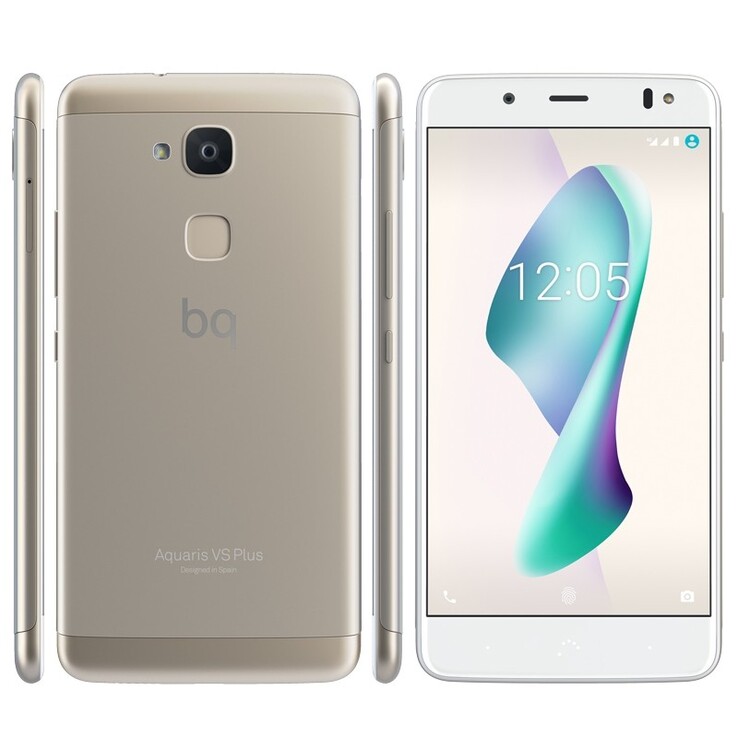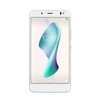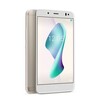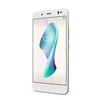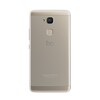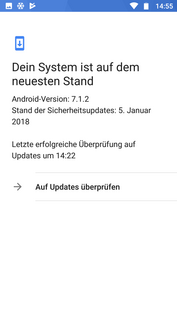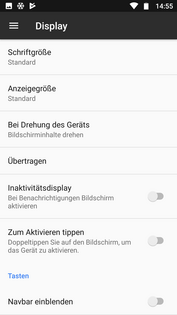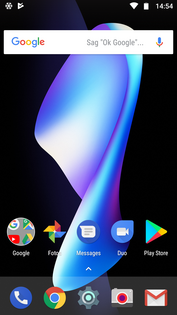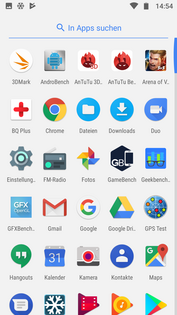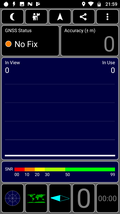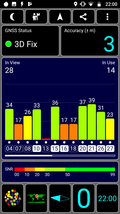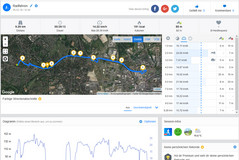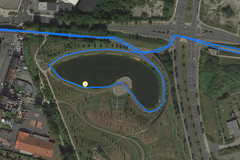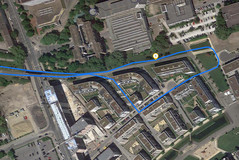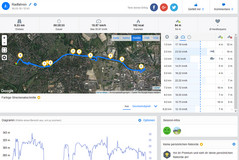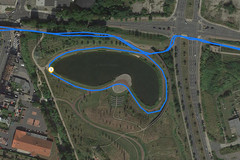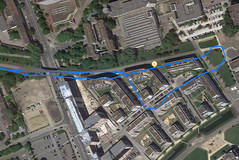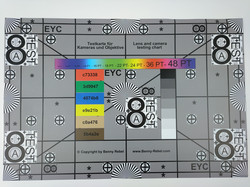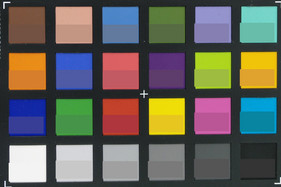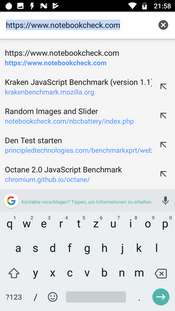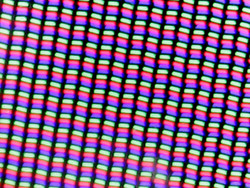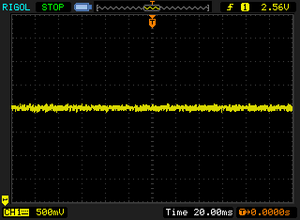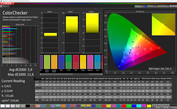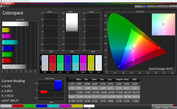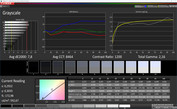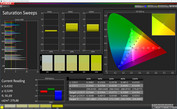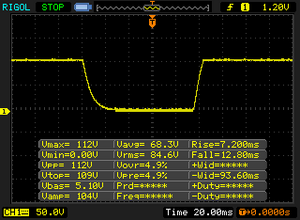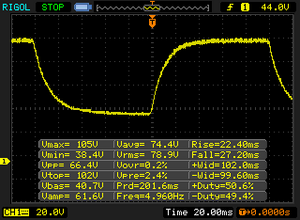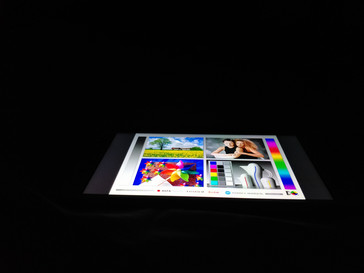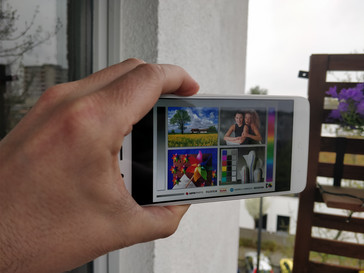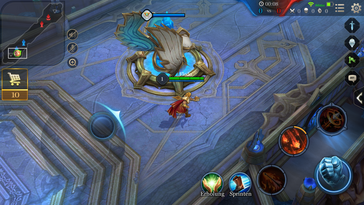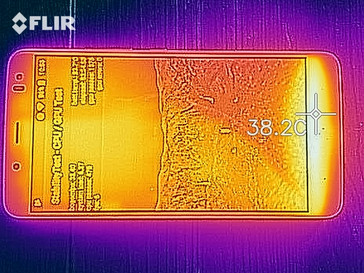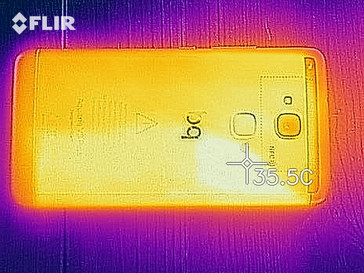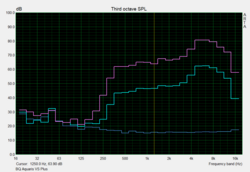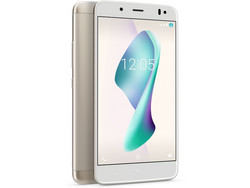BQ Aquaris VS Plus Smartphone Review
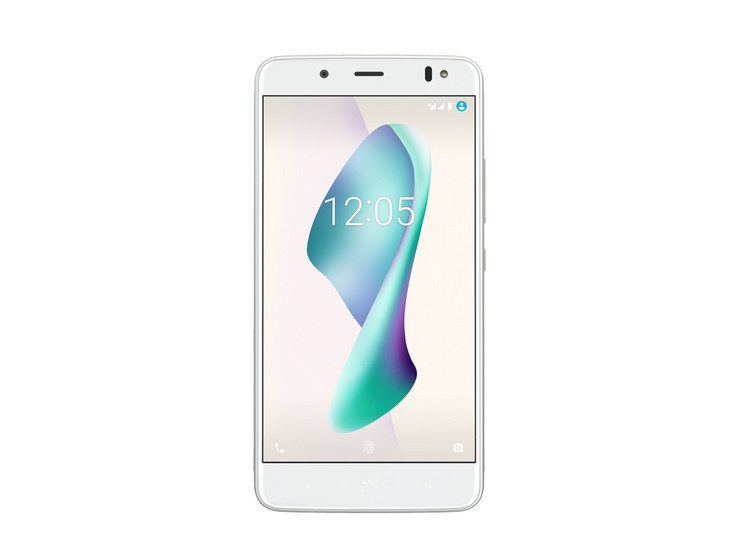
The Aquaris VS Plus is bigger than the both the Aquaris VS and the Aquaris V and is equipped slightly worse but also cheaper in turn...
OK, that demands an explanation: The Aquaris V series is the lower mid-range series of the Spanish smartphone manufacturer BQ. The Aquaris V and the slightly larger Aquaris V Plus have been on the market for some time already. The models Aquaris VS and Aquaris VS Plus are only available directly through BQ or their own Amazon shop. There is no visual difference to the over the counter models, but BQ did make some cuts in terms of features: There is no charger in the box, it is only available in one color and the case is neither dust nor waterproof. We already tested the Aquaris VS and came to the conclusion that being stingy is worth it here, since there are barely any real disadvantages compared to the Aquaris V.
And what about the larger model? Is the Aquaris VS Plus, too, the better buy for price conscious customers? This is what we are hoping to find out by putting the device up against smartphones of a similar size and price: Wiko WIM, Nokia 6, Samsung Galaxy J7 (2017) and Motorola Moto G5s Plus are our devices for comparison.
Further devices by the manufacturer can be found in our database, where reviews for the BQ Aquaris X5, BQ Aquaris X5 Plus, BQ Aquaris M5 or the BQ Aquaris X are available.
Case - BQ Aquaris VS Plus case is sensitive to pressure
The over the counter Aquaris V Plus possesses the same case, though it is also available in black, which is not the case for the Aquaris VS Plus: Here, you have to make do with the golden variant with a white front side. The VS Plus also lacks the IP52 dust and water protection. It is possible that BQ only omits this declaration to save on licensing costs and that the case still has the necessary precautions, but this is something we cannot verify. The Aquaris VS Plus feels comfortable to hold thanks to its rounded-off edges, the measurements exactly match those of the Aquaris V Plus. There are slimmer and more flashy cases, but restraint is something you might wish for, too, in a smartphone.
The Aquaris VS Plus shows color changes in the display when applying medium pressure from the front or strong pressure from the back but is otherwise well-made and rather stable.
Features - BQ Aquaris VS Plus has a lot of storage space
With its 64 GB mass storage and 4 GB RAM, the Aquaris VS Plus compares well to other smartphones in its price range, especially since it is relatively cheap at 240 Euros. In comparison with the Aquaris V Plus featuring the same amount of flash memory, you are saving 60 Euros, at least assuming recommended retail price. The Aquaris V Plus is available online for just 250 Euros.
The storage is expandable through a microSD card, although it occupies one of the two SIM slots, meaning you can only use one SIM card in that scenario. The microSD card is formattable as internal or external storage.
Software – Dated security patches
Communication and GPS – Speedy Wi-Fi, few LTE bands
The Aquaris VS Plus, like the VS, also supports speedy 802.11 ac Wi-Fi, the 5 GHz band can be used as well. The transfer speeds in our test with the reference router Linksys EA8500 yield fairly quick transfer rates, though our test device is not quite able to match the Wiko WIM or the Galaxy J7. Full signal strength can be achieved by being close to the router, pictures load with a slight delay. Ten meters from the router and through three walls, signal strength only decreases by half and the time it takes to display web pages further increases.
As with the Aquaris VS , the VS Plus, too, offers fewer LTE bands than the over the counter model: Just the four most essential ones for Central Europe are supported. For those traveling outside of Europe, connecting to the LTE network of the foreign country will often not be possible. Using the well developed German D2 network, signal reception inside of the city was good, even in buildings.
| Networking | |
| iperf3 transmit AX12 | |
| Samsung Galaxy J7 2017 | |
| Wiko WIM | |
| BQ Aquaris VS Plus | |
| Nokia 6 | |
| Motorola Moto G5s Plus | |
| iperf3 receive AX12 | |
| Wiko WIM | |
| BQ Aquaris VS Plus | |
| Samsung Galaxy J7 2017 | |
| Motorola Moto G5s Plus | |
| Nokia 6 | |
The Aquaris VS's GPS module was praiseworthy, since while it was not able to locate us inside, it determined our location outside with an error margin within 3m. The Aquaris VS paints almost the exact same picture, which is why we also want to commend its GPS module.
But let us hold off on the final commendation until we have our results from the real world test, where we take the Aquaris VS Plus on a bike ride. To compare the results, we also brought the professional navigation system Garmin Edge 500 for cyclists. Here, the test device shows its high reliability in terms of locating us: It traces our path well and even produces a reasonable routes between large buildings, that does not differ too much from the actual street. Our praise is thus justified.
Telephony and Call Quality
ZTE relies on the standard Android phone app by Google. It should be noted that VoLTE is not supported.
We prefer the call quality to that of the smaller smartphones Aquaris VS and Aquaris V: The earphones produce clear sound even at maximum volume, though some white noise is permanently present. The microphone captures our voice rather accurately. The speakerphone quality is good as well, but it is important not to talk too quietly, since otherwise the microphone does not capture our voice anymore.
Cameras – Good picture quality for a mid-range phone
The Aquaris VS Plus is equipped with the exact same camera features as all the other Aquaris V and Aquaris VS series models: There is a 12 megapixel camera on the back and an 8 megapixel front camera. The cameras of other models in the series have always earned our praise, since they take good pictures for their price.
The main camera of the Aquaris VS Plus takes detailed and rather sharp pictures as well, but could do a better job of brightening them. Small details like the overhead power line in the second picture appear slightly less clear than on Apple's iPhone X, but considering the massive price difference we have to compliment the camera of the Aquaris VS Plus here, too. The camera's biggest weakness are low light situations, where it barely brightens the image and creates pictures with significant color distortion. It can record videos at a maximum resolution of 1080p at 30 frames per second. This is where more expensive devices, of course, have more capabilities but the video recordings are generally good colorwise and reasonably sharp. Only low light causes distorted recordings here as well.
The front camera takes color accurate pictures, though the dynamic could be better. It is also able to record 1080p video at 30 fps, which turn out well in normal lighting conditions.
The main camera still has to demonstrate its capabilities in lab conditions. Here, the color squares show some artifacts and there are visible borders around text. Neither of these effects are too dramatic though. Additionally, text on a colored background is displayed quite clearly. The image is quite sharp and barely loses sharpness towards the edges.
Accessories and Warranty – No charger included
Unlike the Aquaris V Plus, the VS Plus smartphone does not come with a charger, there is only a charging cable. The only other accessory in the box is a SIM tool used to open the SIM tray. You can either use your own charger or purchase a QuickCharge-3 charger from BQ for just under 15 Euros.
The phone comes with 24 months warranty. Please see our Guarantees, Return Policies and Warranties FAQ for country-specific information.
Input Devices & Handling – GBoard and good touchscreen
Google's standard app GBoard serves as keyboard app, but other apps can be installed and used anytime. GBoard offers all the necessary features and can be customized through skins, for example.
The touchscreen is very sensitive, even in the edges. There are three touch buttons below it that serve as home, back and app overview buttons that can be difficult to make out on the white surface depending on the lighting conditions. Even then, handling is intuitive and reliable though. The software buttons can be displayed on the screen to use the operating system, too, if desired. The standby button and volume control, both of which are easy to find and have a comfortable pressure point, can be found on the right side of the case.
The fingerprint sensor on the back also does its job quickly and reliably and can wake the phone from standby, too. It cannot be used to navigate the phone and other means of control through gestures are few and far between as well.
Display – Bright Display with good contrast
The Aquaris VS only comes with a 720p display, whereas the VS Plus can shine with a Full HD screen. In this class of devices, it has become the default, with some devices like the Samsung Galaxy J7 and Wiko WIM even using an AMOLED display, which is capable of displaying true black by switching off individual pixels. The Aquaris VS Plus uses a more conventional IPS display, that can be very bright and is, in fact, even brighter than all of its competitors in our comparison. The distribution of brightness is excellent as well: Larger areas of a single color look evenly bright thanks to 96% homogeneous illumination.
| |||||||||||||||||||||||||
Brightness Distribution: 96 %
Center on Battery: 634 cd/m²
Contrast: 1294:1 (Black: 0.49 cd/m²)
ΔE ColorChecker Calman: 5.9 | ∀{0.5-29.43 Ø4.81}
ΔE Greyscale Calman: 7.8 | ∀{0.09-98 Ø5.1}
Gamma: 2.16
CCT: 8464 K
| BQ Aquaris VS Plus IPS, 1920x1080, 5.5" | Nokia 6 IPS, 1920x1080, 5.5" | Wiko WIM AMOLED, 1920x1080, 5.5" | Samsung Galaxy J7 2017 Super AMOLED, 1920x1080, 5.5" | Motorola Moto G5s Plus IPS, 1920x1080, 5.5" | |
|---|---|---|---|---|---|
| Screen | 0% | -11% | 22% | 13% | |
| Brightness middle | 634 | 512 -19% | 344 -46% | 454 -28% | 512 -19% |
| Brightness | 635 | 501 -21% | 353 -44% | 463 -27% | 500 -21% |
| Brightness Distribution | 96 | 94 -2% | 90 -6% | 86 -10% | 90 -6% |
| Black Level * | 0.49 | 0.36 27% | 0.35 29% | ||
| Contrast | 1294 | 1422 10% | 1463 13% | ||
| Colorchecker dE 2000 * | 5.9 | 6.4 -8% | 5.7 3% | 2 66% | 4.6 22% |
| Colorchecker dE 2000 max. * | 11.6 | 10.9 6% | 12.2 -5% | 5.3 54% | 7.6 34% |
| Greyscale dE 2000 * | 7.8 | 7.2 8% | 5.1 35% | 1.7 78% | 3.8 51% |
| Gamma | 2.16 102% | 2.28 96% | 2.73 81% | 2.1 105% | 2.11 104% |
| CCT | 8464 77% | 7904 82% | 7407 88% | 6394 102% | 6952 93% |
* ... smaller is better
Screen Flickering / PWM (Pulse-Width Modulation)
| Screen flickering / PWM not detected | |||
In comparison: 53 % of all tested devices do not use PWM to dim the display. If PWM was detected, an average of 8255 (minimum: 5 - maximum: 343500) Hz was measured. | |||
The contrast is good, too: However, 1.294:1 is not top notch, which stems from the fact that it only has an average black value, dark areas appear slightly grayish. We would have liked to see better color representation, since the color temperature appears somewhat cool. Settings for color balance aside from a blue light filter are absent. Information can also be shown on the standby display through an inactivity display, including, for example, time or received messages.
Color accuracy is only average ex-factory, bright blues stray especially far from the ideal in the reference color space. The color space coverage is good (at least the approximate value that our software outputs). The grayscales show a distinct blue tint.
Display Response Times
| ↔ Response Time Black to White | ||
|---|---|---|
| 20 ms ... rise ↗ and fall ↘ combined | ↗ 7.2 ms rise | |
| ↘ 12.8 ms fall | ||
| The screen shows good response rates in our tests, but may be too slow for competitive gamers. In comparison, all tested devices range from 0.1 (minimum) to 240 (maximum) ms. » 42 % of all devices are better. This means that the measured response time is similar to the average of all tested devices (20.4 ms). | ||
| ↔ Response Time 50% Grey to 80% Grey | ||
| 49.6 ms ... rise ↗ and fall ↘ combined | ↗ 22.4 ms rise | |
| ↘ 27.2 ms fall | ||
| The screen shows slow response rates in our tests and will be unsatisfactory for gamers. In comparison, all tested devices range from 0.165 (minimum) to 636 (maximum) ms. » 85 % of all devices are better. This means that the measured response time is worse than the average of all tested devices (31.9 ms). | ||
Performance – Longing for more
Like the BQ Aquaris VS, the VS Plus, too, uses a Snapdragon 430 SoC.The test device scored typical results for its device class. While it is minimally slower than the Nokia 6 or the Samsung Galaxy J7, day-to-day use should not be affected in a meaningful way. Although the Wiko WIM and the Moto G5s Plus, both of which offer a noticeable performance plus, are available at a similar price.
The Qualcomm Adreno 505 that handles graphics calculations is, in turn, minimally faster than the previously mentioned devices. Although these differences are too small to be noticeable in day-to-day use as well.
| AnTuTu v6 - Total Score (sort by value) | |
| BQ Aquaris VS Plus | |
| Nokia 6 | |
| Wiko WIM | |
| Samsung Galaxy J7 2017 | |
| Motorola Moto G5s Plus | |
| Average Qualcomm Snapdragon 430 (MSM8937) (42798 - 47066, n=16) | |
| PCMark for Android | |
| Work performance score (sort by value) | |
| BQ Aquaris VS Plus | |
| Nokia 6 | |
| Wiko WIM | |
| Samsung Galaxy J7 2017 | |
| Motorola Moto G5s Plus | |
| Average Qualcomm Snapdragon 430 (MSM8937) (3347 - 5290, n=18) | |
| Work 2.0 performance score (sort by value) | |
| BQ Aquaris VS Plus | |
| Nokia 6 | |
| Wiko WIM | |
| Samsung Galaxy J7 2017 | |
| Motorola Moto G5s Plus | |
| Average Qualcomm Snapdragon 430 (MSM8937) (3408 - 3892, n=16) | |
Browser speed is not the Aquaris VS' area of expertise, it almost always places near the bottom and is only completes WebXPRT faster than other devices of its class. Complex HTML5 web pages are still displayed fluidly, they do however take longer to fully load and pictures, too, sometimes appear delayed.
| Octane V2 - Total Score | |
| Average of class Smartphone (2228 - 100368, n=203, last 2 years) | |
| Wiko WIM (Chrome Version 59) | |
| Samsung Galaxy J7 2017 (Samsung Browser 5.4) | |
| Motorola Moto G5s Plus (Chroem Version 62) | |
| BQ Aquaris VS Plus | |
| Average Qualcomm Snapdragon 430 (MSM8937) (2604 - 3438, n=18) | |
| Nokia 6 (Chrome 59.0.3071.125) | |
| Mozilla Kraken 1.1 - Total | |
| BQ Aquaris VS Plus (Chrome 65) | |
| Average Qualcomm Snapdragon 430 (MSM8937) (10396 - 14709, n=18) | |
| Nokia 6 (Chrome 59.0.3071.125) | |
| Motorola Moto G5s Plus (Chroem Version 62) | |
| Wiko WIM (Chrome Version 59) | |
| Samsung Galaxy J7 2017 (Samsung Browser 5.4) | |
| Average of class Smartphone (277 - 28190, n=157, last 2 years) | |
| WebXPRT 2015 - Overall | |
| BQ Aquaris VS Plus (Chrome 65) | |
| Samsung Galaxy J7 2017 (Samsung Browser 5.4) | |
| Average Qualcomm Snapdragon 430 (MSM8937) (42 - 82, n=9) | |
| Nokia 6 (Chrome 59.0.3071.125) | |
* ... smaller is better
If it were not for random writing, the Aquaris VS Plus would have scored even higher in our internal storage write test. This is due to the fact that it tends to handle other scenarios very well and quickly accesses the internal storage.
The microSD memory card read and write performance of the Aquaris VS Plus with our test card Toshiba Exceria Pro M501 is good as well.
| BQ Aquaris VS Plus | Nokia 6 | Wiko WIM | Samsung Galaxy J7 2017 | Motorola Moto G5s Plus | Average 64 GB eMMC Flash | Average of class Smartphone | |
|---|---|---|---|---|---|---|---|
| AndroBench 3-5 | -4% | 9% | -15% | 83% | 70% | 1809% | |
| Sequential Read 256KB | 274.3 | 273.1 0% | 272.1 -1% | 198.5 -28% | 237.4 -13% | 274 ? 0% | 2218 ? 709% |
| Sequential Write 256KB | 205.1 | 77.1 -62% | 136.7 -33% | 53 -74% | 75.7 -63% | 177.4 ? -14% | 1817 ? 786% |
| Random Read 4KB | 48.3 | 33.8 -30% | 38.1 -21% | 25.86 -46% | 37.94 -21% | 60.2 ? 25% | 296 ? 513% |
| Random Write 4KB | 6.4 | 11.34 77% | 13.34 108% | 10.54 65% | 44.89 601% | 33.4 ? 422% | 341 ? 5228% |
| Sequential Read 256KB SDCard | 84.5 ? | 84.6 0% | 83.8 -1% | 76.1 ? -10% | 79.6 ? -6% | 77.4 ? -8% | |
| Sequential Write 256KB SDCard | 60.6 ? | 56.6 -7% | 61.4 1% | 63.9 ? 5% | 58.8 ? -3% | 58.3 ? -4% |
Games – No 60 fps gaming
We at least managed to achieve a fluid frame rate of 30 fps in Arena of Valor, a result that resembles that of the Aquaris VS. In Shadow Flight 3 though, the higher resolution takes its toll: The frame rate is significantly lower at 41 fps, which while playable, puts the 60 fps mode out of reach. All in all the BQ smartphone is suitable for less demanding games, yet demanding games cannot be played at 60 fps.
The touchscreen and gyroscope controls worked well in our test.
| Shadow Fight 3 | |||
| Settings | Value | ||
| high | 41 fps | ||
| minimal | 42 fps | ||
| Arena of Valor | |||
| Settings | Value | ||
| min | 31 fps | ||
| high HD | 30 fps | ||
Emissions – No excessive heat production
Temperature
The BQ Aquaris VS Plus reaches surface temperatures similar to those of the BQ Aquaris VS. Its maximum temperature of 38.7 °C (101.66 °F) slightly exceeds the smaller sister model's, but it is similarly unproblematic in terms of temperature otherwise. While it warms up noticeably, the smartphone can be held anytime without worries.
(+) The maximum temperature on the upper side is 37.8 °C / 100 F, compared to the average of 35.2 °C / 95 F, ranging from 21.9 to 247 °C for the class Smartphone.
(+) The bottom heats up to a maximum of 34.8 °C / 95 F, compared to the average of 33.9 °C / 93 F
(±) In idle usage, the average temperature for the upper side is 36.2 °C / 97 F, compared to the device average of 32.9 °C / 91 F.
Speaker
There is a mono speaker on the bottom edge, which means stereo effects are not possible, deep mid tones can barely be heard at all, high tones are somewhat unpleasantly prominent. The volume is generally high and playback is clear and without distortions even at a very high volume.
Sound output through the 3.5mm headphone jack and bluetooth speakers work without any issues.
BQ Aquaris VS Plus audio analysis
(+) | speakers can play relatively loud (86.7 dB)
Bass 100 - 315 Hz
(-) | nearly no bass - on average 32.1% lower than median
(±) | linearity of bass is average (13.3% delta to prev. frequency)
Mids 400 - 2000 Hz
(+) | balanced mids - only 1.7% away from median
(+) | mids are linear (4.4% delta to prev. frequency)
Highs 2 - 16 kHz
(±) | higher highs - on average 10.4% higher than median
(+) | highs are linear (5.6% delta to prev. frequency)
Overall 100 - 16.000 Hz
(±) | linearity of overall sound is average (26.2% difference to median)
Compared to same class
» 65% of all tested devices in this class were better, 6% similar, 29% worse
» The best had a delta of 12%, average was 35%, worst was 134%
Compared to all devices tested
» 80% of all tested devices were better, 4% similar, 16% worse
» The best had a delta of 4%, average was 24%, worst was 134%
Samsung Galaxy J7 2017 audio analysis
(+) | speakers can play relatively loud (87.1 dB)
Bass 100 - 315 Hz
(-) | nearly no bass - on average 26.6% lower than median
(±) | linearity of bass is average (10.9% delta to prev. frequency)
Mids 400 - 2000 Hz
(+) | balanced mids - only 3.2% away from median
(+) | mids are linear (4.3% delta to prev. frequency)
Highs 2 - 16 kHz
(±) | higher highs - on average 6.1% higher than median
(+) | highs are linear (4.4% delta to prev. frequency)
Overall 100 - 16.000 Hz
(±) | linearity of overall sound is average (20.3% difference to median)
Compared to same class
» 32% of all tested devices in this class were better, 9% similar, 59% worse
» The best had a delta of 12%, average was 35%, worst was 134%
Compared to all devices tested
» 51% of all tested devices were better, 8% similar, 40% worse
» The best had a delta of 4%, average was 24%, worst was 134%
Frequency diagram in comparison (Select or deselect checkboxes above!)
Battery life – Adequate for real-world applications
Energy consumption
Energy consumption is noticeably higher than the Aquaris VS', which can probably be attributed to the higher display resolution. The other smartphones in this comparison require less energy as well, whether in idle or at absolute peak power consumption.
| Off / Standby | |
| Idle | |
| Load |
|
Key:
min: | |
| BQ Aquaris VS Plus 3400 mAh | Nokia 6 3000 mAh | Wiko WIM 3200 mAh | Samsung Galaxy J7 2017 3600 mAh | Motorola Moto G5s Plus 3000 mAh | |
|---|---|---|---|---|---|
| Power Consumption | 14% | 27% | 51% | 12% | |
| Idle Minimum * | 0.79 | 0.63 20% | 0.93 -18% | 0.39 51% | 0.83 -5% |
| Idle Average * | 2.29 | 1.75 24% | 1.28 44% | 1.06 54% | 1.67 27% |
| Idle Maximum * | 2.3 | 1.87 19% | 1.37 40% | 1.08 53% | 1.85 20% |
| Load Average * | 3.84 | 3.56 7% | 2.39 38% | 1.82 53% | 3.47 10% |
| Load Maximum * | 5.95 | 5.85 2% | 4.25 29% | 3.21 46% | 5.41 9% |
* ... smaller is better
Battery Life
The battery provides 3.400 mAh, this is quite generous but still only yields average running time: 10:44 hours in the Wi-Fi test are not a bad result, still the Samsung Galaxy J7 or the Motorola Moto G5s Plus achieve significantly better values. The Aquaris VS Plus is more than capable of making it through a work day, even managing a second one with low usage.
The smartphone can be charged with compatible chargers through QuickCharge 3.0 and is fully charged in less than 2 hours, without QuickCharge it takes up to 3 hours.
| BQ Aquaris VS Plus 3400 mAh | Nokia 6 3000 mAh | Wiko WIM 3200 mAh | Samsung Galaxy J7 2017 3600 mAh | Motorola Moto G5s Plus 3000 mAh | |
|---|---|---|---|---|---|
| Battery Runtime | 4% | -24% | 40% | 51% | |
| WiFi v1.3 | 644 | 670 4% | 492 -24% | 904 40% | 974 51% |
| Reader / Idle | 1695 | 1950 | 1496 | ||
| H.264 | 542 | 1096 | |||
| Load | 228 | 525 | 419 |
Pros
Cons
Verdict – The BQ Aquaris VS Plus earns a recommendation
The BQ Aquaris VS Plus is a low priced smartphone with good cameras, a lot of storage and stock Android. It is only available as smartphone without contract directly from the manufacturer, but it is cheaper than its over the counter sister model in exchange. Speaking of, it offers additional features like water and dust protection, more LTE bands and a charger. Though the price difference would be fairly steep for comparatively few disadvantages, the actual price of the Aquaris V Plus is only 10 Euros higher online than that of the Aquaris VS Plus directly from BQ. For those without a charger, the over the counter model is probably the better choice.
There are barely any other differences, the VS Plus, too, is a smartphone with a straightforward design and a very bright display, fast Wi-Fi and quite accurate GPS. We prefer its speech quality over the Aquaris VS' because the microphone does not distort sounds, battery life is at least solid. BQ should up the ante in terms of security updates, there have not been any new patches since january.
As a smartphone with a bright Full HD screen, fast Wi-Fi and rather accurate GPS, the BQ Aquaris VS Plus earns a recommendation.
The Aquaris VS Plus is a recommendable device, since it barely has any real weaknesses. The choice between it and the over the counter V Plus is a question of price.
BQ Aquaris VS Plus
- 04/17/2018 v6 (old)
Florian Wimmer




